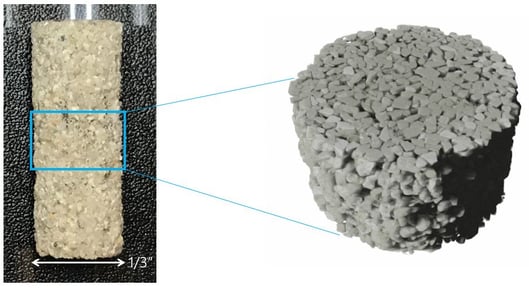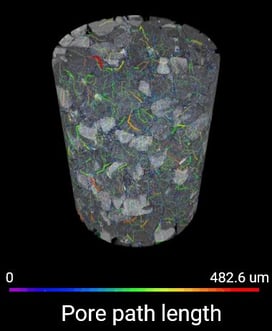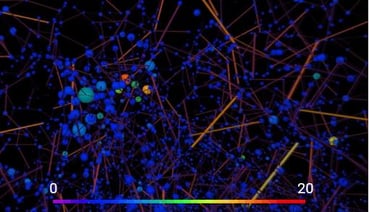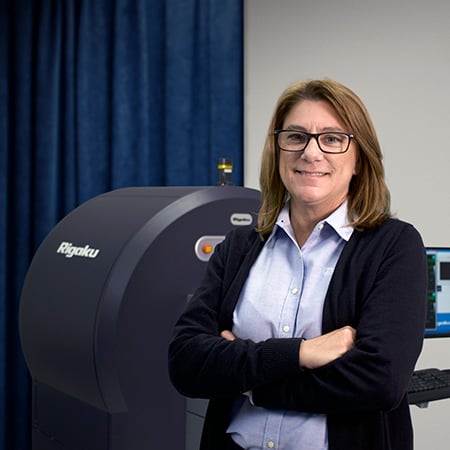Application Note RACCT9019
About the sample: Sandstone
Sandstone is a clastic sedimentary rock composed mainly of sand-like silicate grains. There is a lot of void or pore space between those grains, and sandstones can contain petroleum in that space. The porosity, pore network, and permeability are important parameters that indicate how well or easily you can extract petroleum from sandstones. X-ray CT (computed tomography) is one of the very effective techniques to study those parameters.
Analysis procedure
- In this example, a sandstone core (Idaho Gray) was scanned using a micro-CT scanner, CT Lab HX.
- The resulting image was segmented into sand grains and void space.
- The void space was reduced to a pore network to quantify and visualize path length and connectivity.
1. CT scan
The middle part of the Idaho Gray 1/3" core sample was scanned to produce the 3D grayscale CT image. A 3D rendered CT scan is shown on the right.
The gray level in CT data represents the relative density. The sand grains appear in light gray while the pore space (air) appears black.

2. Image segmentation
The Idaho Gray CT image was segmented into sand grains and void space using Otsu binarization (gray-level thresholding method). The 3D rendering of the void space is shown in the figure.
The porosity was calculated as a void volume percentage, 26.4 vol%. The area close to the sample surface was excluded from the calculation not to include any outside air as voids.

3. Porenetwork analysis
By categorizing the void space into pores (large void spaces) and throats (narrow spaces between pores), the pore network was established.
This example shows the pore-to-pore path length calculation. They are color-coded and mapped on the sand grain image. Red indicates long paths (~ 500 microns) and blue indicates shorter (~ 100 microns) paths.

Once the pore network is established, it can be analyzed from different perspectives, such as path lengths along throats, direct (straight) path lengths, tortuosity, and connectivity.
This example shows connectivity for each pore. Large and red pores have higher connectivity than blue and small pores.
Note: You can purchase those cores from Kocurek Industries Inc.


